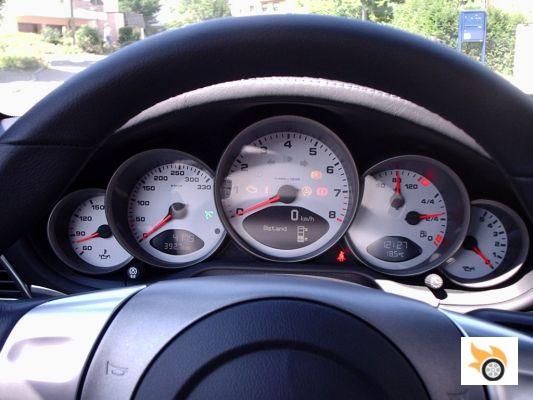
You're driving along in silence and at some point you notice something unusual on the dashboard of your car. A colored light comes on and you don't know what it means. Green? No problem. Blue? Same here. Yellow? We're starting to get worried. Red? It's getting ugly and we may have to go to the mechanic right away.
It's not easy to remember what each light means, especially if you got your license years ago. Modern cars also have many, each with its own meaning and causes that often vary from manufacturer to manufacturer.
The important thing is to remember the meaning of these 5 particular spies (pretty standard among different car models) in order to react correctly if they come on.
If you're not sure which light is on in your dashboard, take a look at our Ultimate Guide to Car and Motorcycle Spies and you'll certainly be able to identify it.
1) Coolant Temperature Indicator Light
When our car's engine is running, it can easily exceed 100 degrees Celsius. To prevent melting and internal parts from warping a flow of coolant, or coolant, surrounds the engine and helps keep the temperature under control. If the warning light comes on, the temperature has exceeded normal levels and is getting too hot. This could be due to a low coolant level or a more serious problem such as radiator failure, a water pump problem or a leak in the water circuit.
What to do if the coolant temperature warning light comes on?
Stop the car carefully, switch off the engine and wait about ten minutes. If the indicator light disappeared once it came back on, it was probably a system error. If it stays on, check the fluid level (you'll usually find the indicator near the radiator) and top it up if it's low, even with water if you don't have the specific fluid with you. In either case, something must have caused a leak and, if ignored, the problem will reoccur. Best thing to do is immediately go to a mechanic and have the car inspected.
2) Engine oil pressure light
Engine oil performs crucialfunctions such as lubricating the mechanical components, dissipating heat to the cooler areas of the engine, and cleaning up combustion residue. To do all this, every car has a complex lubrication system that needs to keep the oil at a certain pressure to function properly. If there is a leak, the pump is damaged or the oil is just old and now dirty the warning light will come on.
What to do if the engine oil pressure light comes on?
The engine oil pressure warning light coming on should not be taken lightly. Like the coolant warning light,
Stop the car safely now, turn off the engine and find the nearest mechanic.
with a tow truck. Continuing to drive could cause serious damage to your engine and you could end up spending thousands to repair it.
3) Engine Malfunction Indicator Light
Although not one of the nasty red lights, the engine malfunction warning light should absolutely be taken seriously given the variety of problems it can report, including problems with the fuel system, engine starting or ignition. As a general rule, if it stays steady yellow/orange it refers to a non-critical emissions problem, but if it flashes rapidly there may be a serious engine problem and immediate action should be taken.
What to do if the misfire light comes on?
Stop the car carefully, turn off the engine and wait a few minutes. If the warning light remains steady or flashing, immediately (but carefully) see a mechanic to assess the damage and limit it as soon as possible. Engine damage "stuck in time" can be a trifle, if left out it becomes a nightmare.
4) Brake Failure Warning Light
The meaning of this warning light varies from model to model. On some models it refers to the parking brake engagement warning, so there's nothing to worry about. On other models where the parking brake latch is represented by a circled P, this warning light indicates problems with the brake system, which is quite concerning.
What to do if the brake failure light comes on?
In most cases the warning light disappears after the handbrake has been activated/selected and the car has been switched off/on. However, if the warning light is still on, it is essential to contact a mechanic immediately. The brake system will most likely need to be inspected for mechanical defects or brake fluid leaks. We strongly advise you not to drive before you have determined the brake problem, your safety is at stake!
5) Battery or alternator trouble light
Obviously, a battery warning light can only indicate battery problems, however it may not be the only problem. This light can also refer to alternator problems. The consequences are quite similar, by not accumulating enough energy or not storing enough, the car will not start after being stopped. The alternator poses another problem, if damaged it can undercharge but also overcharge the battery. In the event of overcharging, the excess electrical energy can burn out circuits, fuses and the control unit (the "brain" of the car), causing many functions of the car to go haywire and creating serious damage.
What to do if the battery or alternator light comes on?
As soon as the indicator light appears, it is best to drive at least 15 km to allow the battery to recharge, turning off the air conditioning and other energy consuming functions. If the light stays on, the cause is probably the alternator. It is therefore necessary to go to an electrician as soon as possible to carry out a check and prevent the car from not starting again or the alternator from damaging the electronics.


























